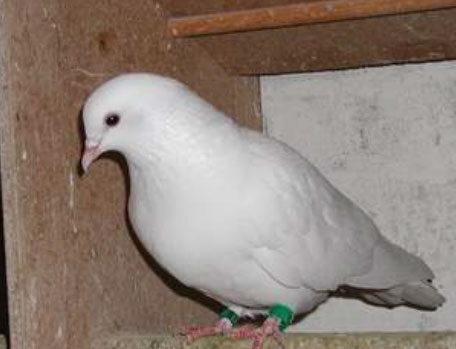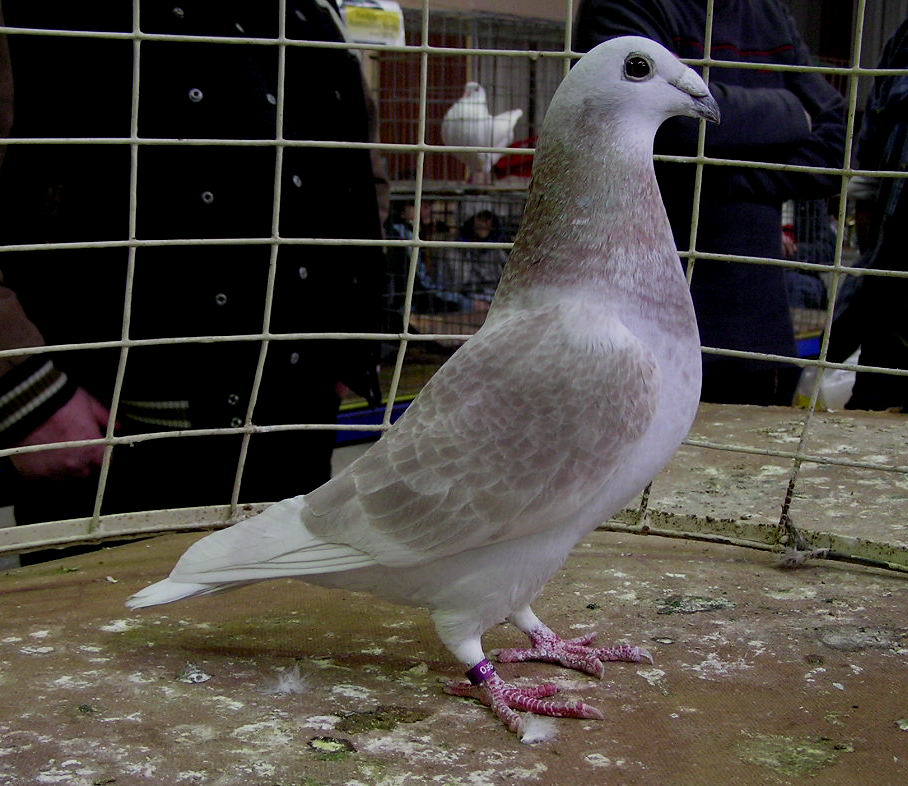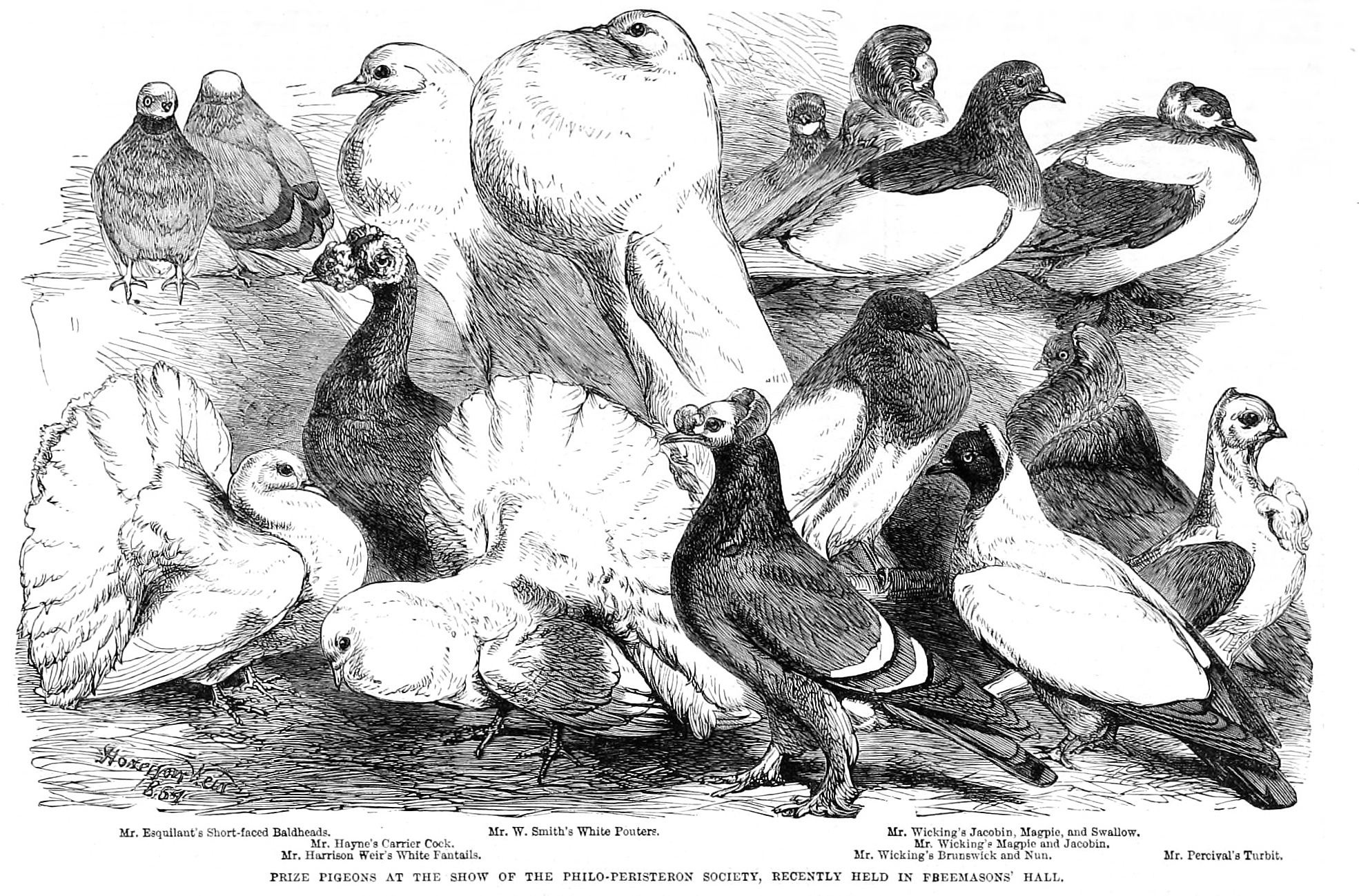|
Cumulet
The Cumulet is a breed of fancy pigeon. It is a strong, high-flying breed, reportedly capable of remaining on the wing for up to 14 hours. It was used for short-distance racing in England in the first half of the 1800s. Cumulet, along with other varieties of domesticated pigeons, are all descendants from the rock pigeon (''Columba livia''). See also *List of pigeon breeds This is an alphabetical list of pigeon breeds; these are exclusively breeds of the domestic pigeon (''Columba livia domestica''). Other Columbidae species (e.g., the Barbary dove, ''Streptopelia risoria'') have been domesticated and developed in ... References External links * Pigeon breeds {{Domesticated-pigeon-breed-stub ... [...More Info...] [...Related Items...] OR: [Wikipedia] [Google] [Baidu] |
List Of Pigeon Breeds
This is an alphabetical list of pigeon breeds; these are exclusively breeds of the domestic pigeon (''Columba livia domestica''). Other Columbidae species (e.g., the Barbary dove, ''Streptopelia risoria'') have been domesticated and developed into breeds, but these are generally simple colour variations of the plumage. A * Aachen Cropper (D/326)Entente Européenne d' Áviculture et de Cuniculture (2012)''EE-List of the Breeds of Fancy Pigeons'' (ELFP) * Aachen Lacquer Shield Owl pigeon (= Aachen Luster Shield,Encyclopedia of Pigeon Breeds''List of Pigeon Breeds''/ref> ELFP-No. D/705; = Aachen Shield OwlNational Pigeon Association (2014)(table of contents by name)) * Aargae Peak-crested * Abu Abse-Dewlap (D/063) * African Owl pigeon (GB/710) * Agaran Pigeon (RUS(D)/893) * Alpine Swift pigeon * Alsace Cropper (B/308) * Altenburg Trumpeter (D/513) * American Bohemian Pouter *American Cam Cropper * American Flying Bald-head * American Flying Flight * American Flying Tumbler * Am ... [...More Info...] [...Related Items...] OR: [Wikipedia] [Google] [Baidu] |
Breed
A breed is a specific group of breedable domestic animals having homogeneous appearance (phenotype), homogeneous behavior, and/or other characteristics that distinguish it from other organisms of the same species. In literature, there exist several slightly deviating definitions. Breeds are formed through genetic isolation and either natural adaptation to the environment or selective breeding, or a combination of the two. Despite the centrality of the idea of "breeds" to animal husbandry and agriculture, no single, scientifically accepted definition of the term exists. A breed is therefore not an objective or biologically verifiable classification but is instead a term of art amongst groups of breeders who share a consensus around what qualities make some members of a given species members of a nameable subset. Another point of view is that a breed is consistent enough in type to be logically grouped together and when mated within the group produce the same type. When bred togeth ... [...More Info...] [...Related Items...] OR: [Wikipedia] [Google] [Baidu] |
Fancy Pigeon
Fancy pigeon refers to any breed of domestic pigeon, which is a domesticated form of the wild rock dove (''Columba livia''). They are bred by pigeon fanciers for various traits relating to size, shape, color, and behavior, and often exhibited at pigeon shows, fairs and other livestock exhibits. There are about 800 pigeon breeds; considering all regional varieties all over the world there may be 1100 breeds. The European list of fancy pigeons alone names about 500 breeds. No other domestic animal has branched out into such a variety of forms and colours. Charles Darwin is known to have crossbred fancy pigeons, particularly the ice pigeon, to study variation within species, this work coming three years before his groundbreaking publication, ''On the Origin of Species''. Pigeon showing Pigeon fanciers from many countries exhibit their birds at local, inter-state or national shows and compete against one another for prizes. One typical country show in Australia in 2008 had hundreds o ... [...More Info...] [...Related Items...] OR: [Wikipedia] [Google] [Baidu] |
Domestic Pigeon
The domestic pigeon (''Columba livia domestica'' or ''Columba livia'' Form (zoology), forma ''domestica'') is a pigeon subspecies that was derived from the rock dove, rock dove or rock pigeon. The rock pigeon is the world's oldest domesticated bird. Mesopotamian Cuneiform script, cuneiform tablets mention the domestication of pigeons more than 5,000 years ago, as do Egyptian hieroglyphics. Pigeons have held historical importance to humans as Squab, food, Companion animal, pets, Doves as symbols, holy animals, and Carrier Pigeon, messengers. Due to their homing ability, pigeons have been used to deliver messages, including War pigeon, during the world wars. Despite this, city pigeons, which are feral birds, are generally seen as Pest (organism), pests, mainly due to their feces, droppings and a reputation for Natural reservoir, spreading disease. History of domestication Despite the long history of pigeons, little is known about the specifics of their initial domestication. W ... [...More Info...] [...Related Items...] OR: [Wikipedia] [Google] [Baidu] |
Rock Pigeon
The rock dove (''Columba livia''), also sometimes known as "rock pigeon" or "common pigeon", is a member of the bird family Columbidae (doves and pigeons). In common usage, it is often simply referred to as the "pigeon", although the rock dove is the wild form of the bird; the pigeons familiar to most people are the domesticated forms of the wild rock dove. Wild rock doves are uniformly pale grey with two black bars on each wing, with few differences being seen between males and females; i.e. they are not strongly sexually dimorphic. The domestic pigeon (often, but invalidly, called "''Columba livia domestica''"), which includes about 1,000 different breeds, is descended from this species. Escaped domestic pigeons are the origin of feral pigeons around the world. Both forms can vary widely in the colour and pattern of their plumage unlike their wild ancestor, being red, brown, checkered, uniformly coloured, or pied. Habitats include various open and semi-open environments ... [...More Info...] [...Related Items...] OR: [Wikipedia] [Google] [Baidu] |




